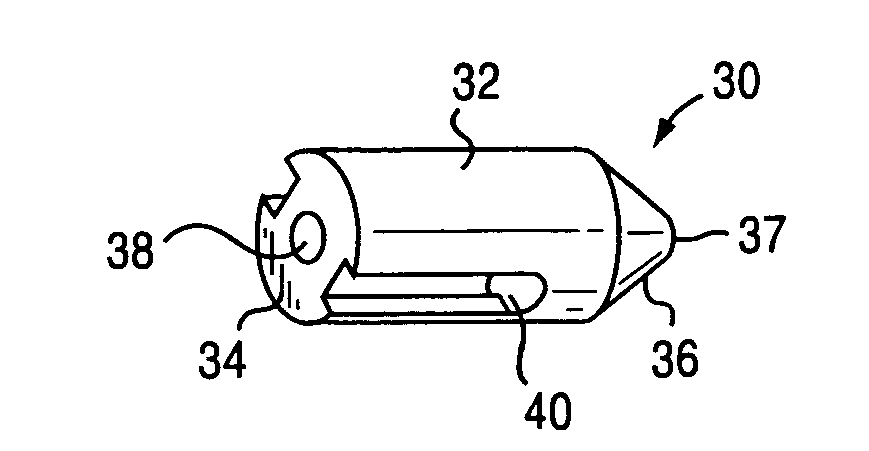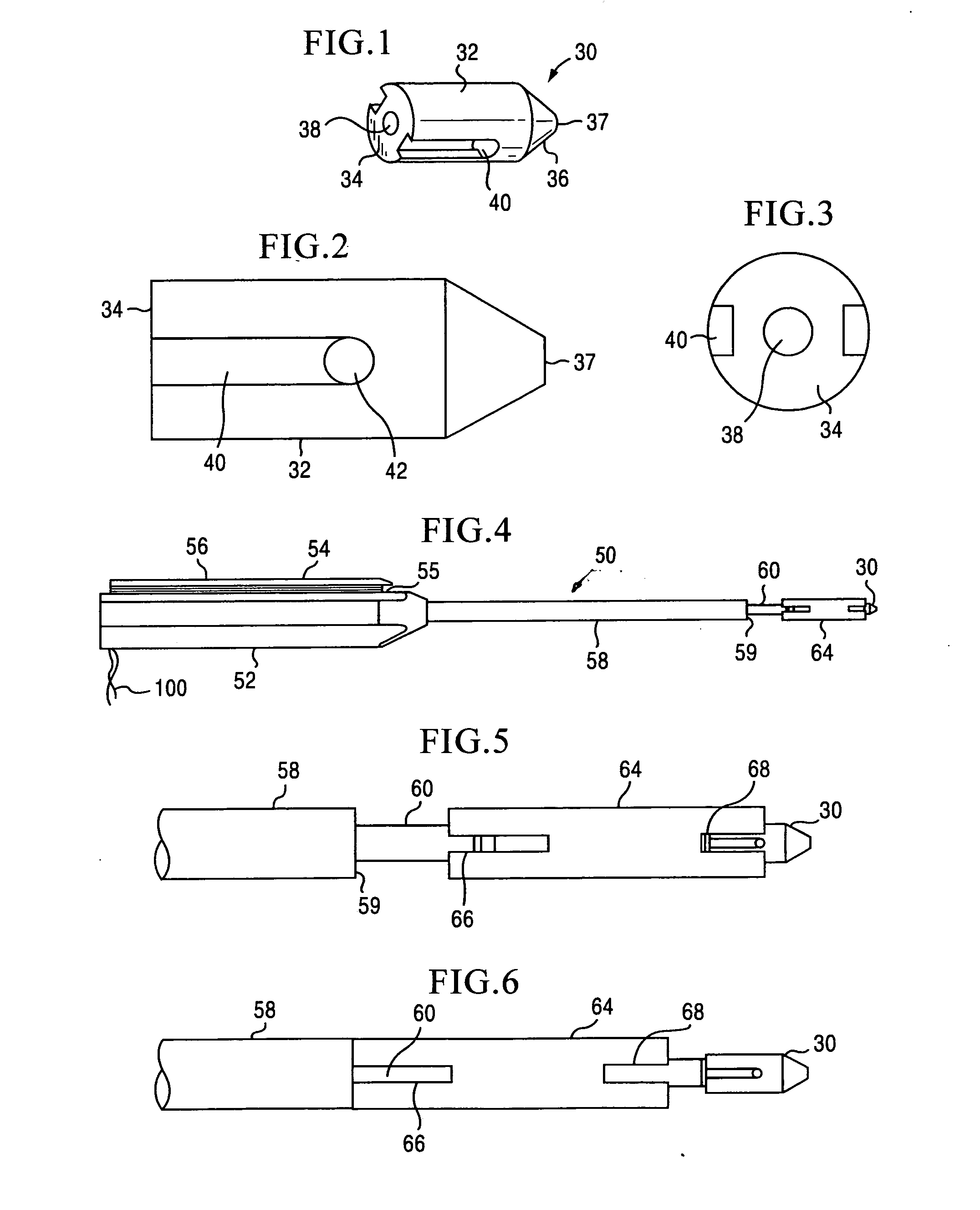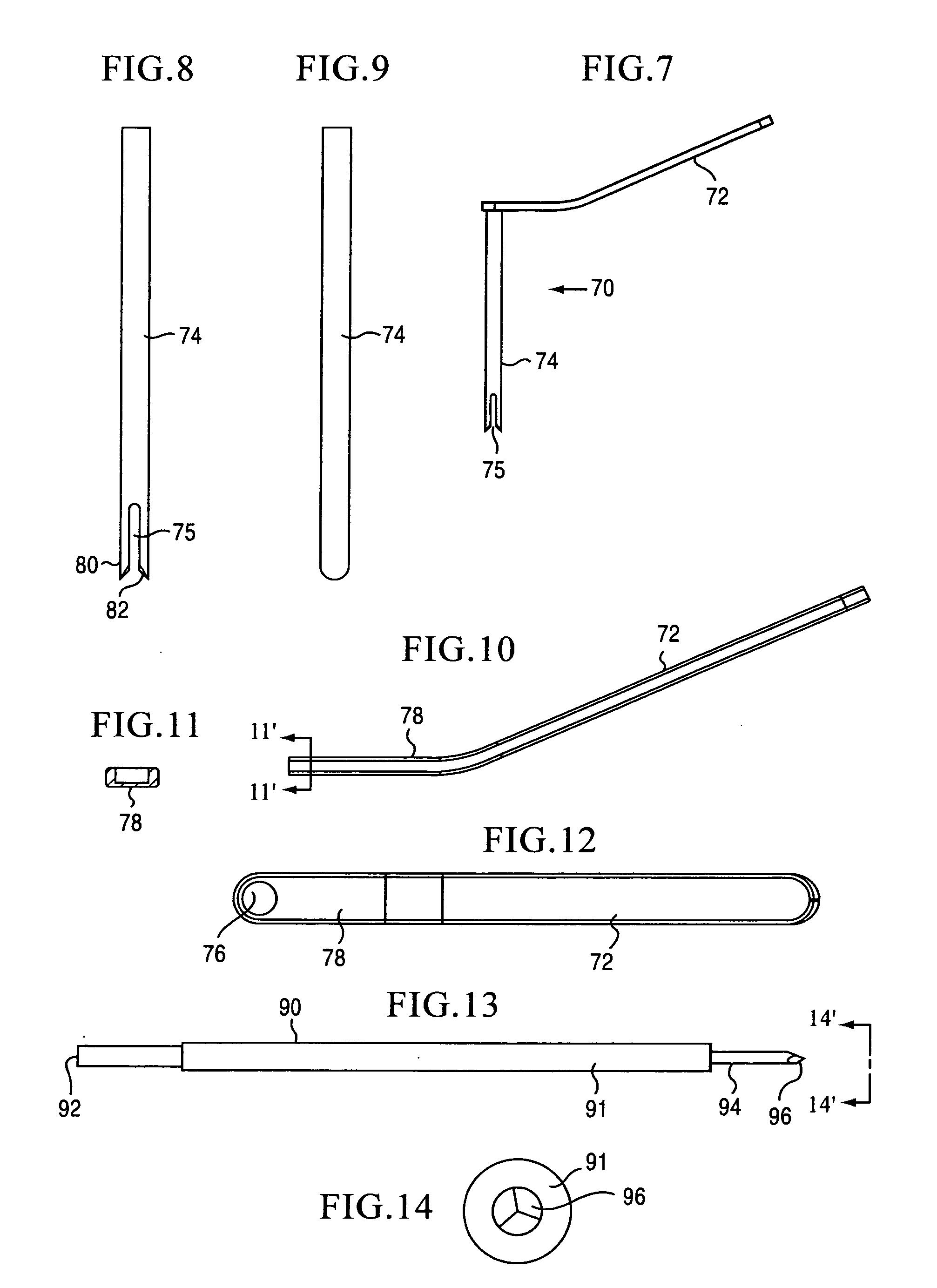Press fit suture anchor and inserter assembly
a technology of suture anchor and inserter, which is applied in the field of suture anchors, can solve the problems of increasing the load and stress placed, joint injuries, and corresponding damage to the associated soft tissue, and achieves the effects of promoting natural bone growth, less susceptible to mechanical breakage, and easy penetration through the anchor
- Summary
- Abstract
- Description
- Claims
- Application Information
AI Technical Summary
Benefits of technology
Problems solved by technology
Method used
Image
Examples
Embodiment Construction
[0053]The preferred embodiment and the best mode of the invention as shown in FIGS. 1 through 24 shows a suture anchor 30 with a cylindrical body 32 having a flat proximal end 34 and a truncated conical distal portion 36 having a flat end surface 37 which is initially inserted into a bore 206 cut in the bone mass as shown in FIGS. 19-24. The flat proximal end 34 defines a centrally located blind bore 38 which is sized to receive the end 62 of an inserter device 50. The conical distal end 37 tapers inward in about from 30° to 45° from the sides of the cylindrical body toward the center longitudinal axis of the suture anchor for self centering insertion into bone bore 206. Side grooves 40 are cut in the exterior surface of the cylindrical body and run from about 50% to about 75% of the length of the cylindrical body 32 where they intersect a transverse throughgoing bore 42 in the cylindrical body 32 and together form a seat in the suture anchor for the suture strand or strands 100 whi...
PUM
 Login to View More
Login to View More Abstract
Description
Claims
Application Information
 Login to View More
Login to View More - R&D
- Intellectual Property
- Life Sciences
- Materials
- Tech Scout
- Unparalleled Data Quality
- Higher Quality Content
- 60% Fewer Hallucinations
Browse by: Latest US Patents, China's latest patents, Technical Efficacy Thesaurus, Application Domain, Technology Topic, Popular Technical Reports.
© 2025 PatSnap. All rights reserved.Legal|Privacy policy|Modern Slavery Act Transparency Statement|Sitemap|About US| Contact US: help@patsnap.com



